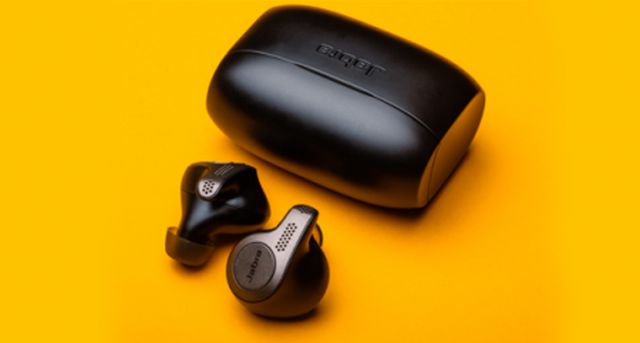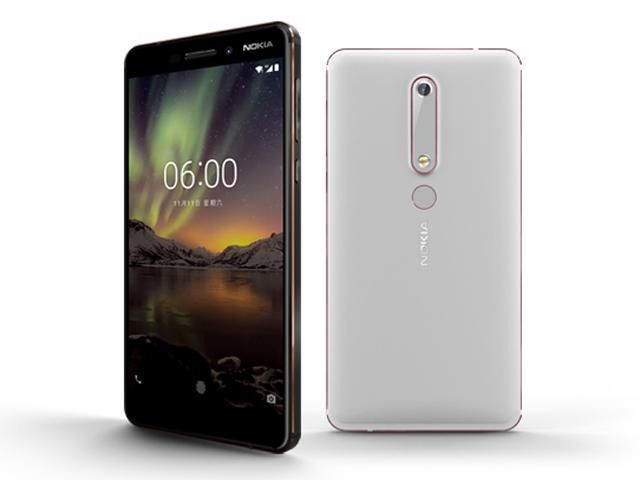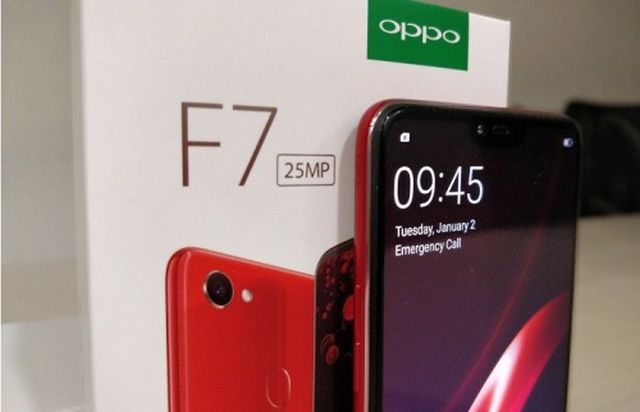
by admin | May 25, 2021 | Branding, Business, Investing, Markets, SMEs, Technology
 By Sourabh Kulesh,
By Sourabh Kulesh,
New Delhi : Finnish company HMD Global that makes Nokia smartphones has refreshed its line-up to gain some momentum in the competitive mid-price segment in India.
The recently-launched Nokia 7 Plus runs the “Android One” platform — the unmodified Android operating system (OS) with a promise of improved security via frequent updates.
Priced at Rs 25,999, the device with 4GB RAM and 64GB on-board memory is in direct competition with Moto X4 (Rs 24,999 for 6GB variant).
Let’s see what works for the device.
The device sports curved back and slim edges in a comfortable and neat package. Available in black and white colours, the smartphone has copper-coloured metallic strips running around the chassis, rear dual-camera setup and the fingerprint scanner, giving it a premium look.
The fingerprint sensor is placed under the cameras on the back.
With thin bezels, the 6-inch Full-HD+ screen (with a display resolution of 2,160 x 1,080 and 18:9 aspect ratio) gives a big-screen experience in the same width as a traditional 5.5-inch display device. Moto X4 has a 5.2-inch display and a front-facing fingerprint scanner.
Running Netflix original documentary “Chasing Coral” did not produce any lag, with the device providing vivid hues and an impressive wide colour gamut.
When compared with a Sony Bravia engine-powered Full-HD device, Nokia 7 Plus’s output topped the competition.
The device is powered by Qualcomm Snapdragon 660 Octa-core processor with 4GB RAM, which is slightly better than Moto X4 that comes with Snapdragon 630 with up to 6GB RAM.
We did not experience any noticeable lag while using it for light gaming like “Football Strike”.
However, with demanding games like “real Drift Car Racing”, we needed to turn the background apps off for a smooth experience.
According to HMD Global, the battery has been optimised and integrated for maximum performance and battery life.
With a 3,800 mAh battery, we could run the device for almost a day on a modest use. While playing heavy games, it could only last a little over 17 hours.
Nokia 7 Plus comes with a dual-camera system with enhanced dual-sight and dual sensors with ZEISS optics.
The system combines 12MP wide-angle primary lens and a secondary 13MP telephoto lens to deliver 2X optical zoom.
The photos were rich in colour, crisp and maintained the lighting effects, thanks to company’s innovative optical hardware and imaging algorithms.
Even the 16MP front camera comes with ZEISS optics and high-quality lowlight capability.
People can also use both the cameras at the same time and click pictures with cameras on both the sides.
The smartphone runs Android 8.1 (Oreo) and the company has promised timely Google security and operating system updates.
What doesn’t work?
The device sometimes takes time to process the photo.
Nokia 7 Plus is also not for heavy gaming as the effort ends up in an overall performance dip.
Conclusion: With Stock Android gaining preference among buyers, Nokia 7 Plus is a good option in the mid-price segment. Its promising hardware, stylish looks, and regular updates could turn the game into its favour.
(Sourabh Kulesh can be contacted at sourabh.k@ians.in)
—IANS

by admin | May 25, 2021 | Branding, Business, Markets, Medium Enterprise, SMEs, Technology
 By Krishna SinhaChaudhury,
By Krishna SinhaChaudhury,
New Delhi : Wire-free listening has its own perks and Apple’s AirPods (Rs 15,400) and Bose SoundSport Free (Rs 18,990) cord-free earbuds have ruled the roost in the Indian market.
Not any more.
Denmark-based Jabra, a subsidiary of GN Netcom that makes in-ear and on-ear audio wearables, is now offering Jabra “Elite 65t” wireless in-ear headphones for just Rs 12,999.
Is it worth given the price? Let’s find out.
At first glance, the Elite 65t looks promising. The earbuds are all black with gunmetal gray accents to add some flash to an otherwise understated design.
A good thing about the buds is that these do not stick out from the ears. There are no “long stems” either that hang close to earlobes like the ones we see in the Apple AirPods.
The company has included silicone tips in three different sizes that offer a good amount of noise isolation and a secure fit.
The tips had no wings to hold the device in place but they stayed secure in our ears. Using the largest buds gives a tight fit which is crucial to maximising bass.
We also found the buds to be quite capable in handling sweat and dust.
A charging case is included in the package that is slightly bigger than the one provided with AirPods. A good thing is despite being slightly larger, it remains a pocketable case.
The charging case is durable despite being made of plastic and could handle rough usage. A clasp in the front secured the case and ensured the headphones do not come off easily.
The earbuds lasted close to five hours on a single charge and the case added close to 10 hours of battery life to Jabra Elite 65t.
A neat feature is that pulling out one of the earbuds stops the music automatically. It starts playing again once plugged back into the ear.
We also found it easy to toggle through tracks just by holding down the volume up and down buttons on the left eartip.
The earbuds delivered quality sound — clarity and volume in all conditions. Both the eartips feature a microphone area that stick slightly towards the mouth to pick up the sound.
The microphones built into each bud filtered out ambient noise, such as wind, during the test calls.
What does not work?
We found the noise-isolating fit too tight and some may find it uncomfortable.
The fit can also cause slight pain if worn for long periods.
Conclusion: The Jabra Elite 65t offers great audio packaged in a durable and good-looking in-ear device, offering good overall music and call quality. If you are looking for a cheaper alternative to AirPods, we would recommend this device that also beats the AirPods in many ways.
(Krishna SinhaChaudhury can be contacted at krishna.s@ians.in)
—IANS

by admin | May 25, 2021 | Markets, Technology
 By Sourabh Kulesh,
By Sourabh Kulesh,
New Delhi : “OK Google, wake me up at 8 a.m. and book an appointment with the hair stylist at 10 a.m.,” went the instruction to Google Home — the voice-activated speaker powered by Google Assistant.
“Sure, your alarm is set for 8 a.m. and the appointment has been fixed for 10 a.m.,” came the instant reply from Google Assistant — the new lady in my home who, according to senior company executives, has received over 4.5 lakh marriage proposals from India.
Following the launch of “Amazon Echo” smart speaker in India last year, Google has now brought its “Home” speaker range to the country.
Google Home and Home Mini speakers — priced at Rs 9,999 and Rs 4,499, respectively — can help people with their commute, play their favourite songs and videos, plan their daily schedule and lots more.
Let’s see how Google Home fares in the Indian context.
The speaker is capable of understanding the thick Indian accent thanks to two microphones on either side of the LED lights that light up when the device recognises the opening “OK Google” voice command.
The two microphones utilise the neural beam forming technique to enable accurate voice recognition.
The curves of the device resemble a wine glass. The lower part holds the speakers and the upper part is the main body with the touch-sensitive top.
When the volume is increased or decreased, the device responds with the shimmering ivory-coloured light ring.
Google has trained the Assistant in English and has promised Hindi support later this year.
“Play ‘Firestone’ by KYGO,” went another voice command and lo! the device checked the Google Play music subscription — the company is giving six-month free Google Play music subscription when you buy the device — and instantly played the song.
The device also works with music streaming platforms like Saavn and Gaana. The music output was good for a medium-sized room.
“OK, Google, play Arijit Singh songs.” She returned with the hit number “Enna sona kyun rab ne banaya”.
If you want to chat or listen to her in an another room, pair another Home device or a Bluetooth speaker with Chromecast support. Another option is to attach a Chromecast Audio device to a speaker.
Google Assistant told us the correct score of Delhi Daredevils while it chased the Mumbai Indians’ total in one of the IPL matches.
However, to a question on happenings in Syria, she played a 30-second news bulletin from BBC News.
Google has simulated hundreds of thousands of noisy environments and applied Machine Learning (ML) to recognise patterns that allow it to filter and separate speech from noise.
Google Assistant understands several languages and can translates sentences into Spanish, French and more.
Not only multimedia, Google Home can also control smart devices such as connected Internet of Things (IoT) device “Philips Hue” in your drawing room.
We set up Google Home to control a light bulb which was connected via “Philips Hue”. We asked the device to dim, turn off and turn on the light and got the desired results.
What didn’t work?
While playing music, Google Home at times did not receive the command in one go. We had to raise our voice twice or sometimes thrice to get the command through the noisy environment.
One important takeaway: Never keep your Google Assistant-enabled smartphone near Home device as the voice command does wake up Assistant in the smartphone too and could ruin the whole experience.
Conclusion: At this price point, Google Home is a good choice as it saves time while performing some key daily tasks for you. It is not the replacement of your better half yet, but does help you with daily chores. Take it home.
(Sourabh Kulesh can be contacted at sourabh.k@ians.in)
—IANS

by admin | May 25, 2021 | Branding, Business, Marketing Basics, Markets, Medium Enterprise, Technology

Nokia 6 (2018)
By Krishna SinhaChaudhury,
New Delhi : Finnish company HMD Global launched Nokia 6 last year with a good design — but its internals left users craving for more.
The company, which got the licence in 2016 to sell Nokia-branded devices and displayed its first line-up last year, has now launched a refreshed iteration of Nokia 6 that runs the “Android One” platform — the unmodified Android operating system (OS) with a promise of improved security through frequent updates.
Android One primarily focused on entry-level devices for emerging markets, including India, but later evolved into Google’s key mobile programme.
At Rs. 16,999 for 3GB RAM and 32GB on-board storage, Nokia 6 (2018) competes with the likes of Xiaomi Redmi Note 5 Pro and Honor 9 Lite.
Here is what we think of the new Nokia 6.
Carved from a single block of 6,000-series aluminium and the two-tone anodisation (a process used for the surface treatment of aluminium), this device is a classic Nokia.
The design does not scream for attention — though the slightly curved rear impresses — and the sturdy build would make sure the device can handle a few falls.
The 16MP primary camera now comes with Zeiss optics and the black-coloured variant with copper trimmings on the side, as well as the camera module and the fingerprint scanner, give the device a stylish edge over its rivals.
Despite the sturdy built, the device was not heavy to hold, thus making it ergonomic as well.
The subtle antenna bands running on the top and bottom of the smartphone looked good.
Unlike last year’s iteration, the new Nokia 6 comes with upgraded specifications, such as a newer octa-core Qualcomm Snapdragon 630 chipset which also powers the pricier Moto X4.
Performance was smooth and we did not notice any significant stutter while running several apps, browsing videos and chatting on social media apps simultaneously.
The 16MP primary camera produced crisp and well-balanced shots during the review. The images were neither too washed out nor looked over-saturated.
The 8MP wide-angle front shooter also produced decent images.
HMD Global has not heavily customised the camera software, adding what it calls a “bothie Mode” which we first saw on last year’s Nokia 8.
The “bothie” feature essentially activates both the front and rear shooters to capture images or videos simultaneously.
A 3,000mAh battery fuels the smartphone and it was good to see it supporting fast-charging technology and a USB-Type C port.
What does not work?
Despite being launched in 2018, the device comes with the traditional aspect ratio of 16:9 which is likely to put off many users as new smartphones in the similar price range have moved on to the 18:9 aspect ratio.
We also found the device heating up on a few occasions, including gaming.
The primary camera showed lag while processing images on a few occasions.
Conclusion: Capable hardware coupled with pure and clean Android and a good overall experience makes the 2018 Nokia 6 a competent and a stylish smartphone in this price segment.
(Krishna SinhaChaudhury can be contacted at krishna.s@ians.in)
—IANS

by admin | May 25, 2021 | Branding, Business, Markets, Medium Enterprise, Technology
 By Krishna SinhaChaudhury,
By Krishna SinhaChaudhury,
New Delhi : Chinese handset maker OPPO introduced its photo-focused “F” series in January 2016. The company has now refreshed the line-up with F7 at Rs 21,990 for the selfie-loving generation.
OPPO is among the few of those credited with starting the selfie-centric smartphone craze. The effort paid off well and OPPO has been refreshing its “F” and “A” series from time to time in the country.
The new F7 smartphone follows the new trend of having a screen with 19:9 aspect ratio — a notch above the display that we first saw on the Apple iPhone X.
Aggressively priced at Rs 21,990, OPPO F7 essentially competes with the newly-launched Vivo V9 that sports similar specifications.
How does the smartphone fare in daily usage? Here’s the verdict.
The design and build of the new F7 is a welcome change from what we saw in previous iterations of OPPO’s “F” series devices.
The company has done away with full metal-body design in favour of an all-plastic body that makes it very lightweight to hold and look flimsy at the same time.
At a first glance, it would look like a glass sandwich design but OPPO has accommodated a piece of polymer composite material on the rear.
Similar to other “notched” Android devices, the F7 also has a smaller notch compared to iPhone X which houses the sensors, the earpiece and a 25MP selfie camera with F/2.0 aperture.
The device has Artificial Intelligence (AI) beauty (for the front camera) feature and sensor HDR capabilities.
The self-portraits came out nice and we liked the option wherein we could manually choose the level of beautification for clicking selfies.
The 6.23-inch LCD IPS display with full HD+ resolution has been housed in normal-sized package thanks to the 19:9 aspect ratio that gives more screen space for viewing.
The display was sharp with on-screen navigation keys. However, the keys usually hide while using full-screen apps, to be brought back with an upward swipe from the bottom of the screen.
A Mediatek Helio P60 chip powers the device coupled with 4GB RAM and 64GB internal storage which performed well.
The phone is fuelled by 3,400mAh battery and runs Color operating system (OS) 5.0 based on Android 8.1 Oreo OS.
Unlike its closest competitor, the Vivo V9, Oppo F7 uses a 16MP single sensor. However, it clicked decent images in adequate lighting conditions.
We particularly liked the alternative to ditch the on-screen navigation keys. The gestures, when activated, gave a better overall experience.
What does not work?
The rear camera’s performance was pretty weak in dim-light conditions. Lack of 4K-video recording is another put off.
Also, the device lacks dual rear cameras unlike Vivo V9.
OPPO has also skipped a USP-Type C charging port — which is the trend today — in favour of the dated Micro-USB port in the F7.
Conclusion: OPPO F7 is a decent smartphone that should appeal to most selfie-focused users who want more screen space in a traditional 5.5-inch device.
(Krishna SinhaChaudhury can be contacted at krishna.s@ians.in)
—IANS





